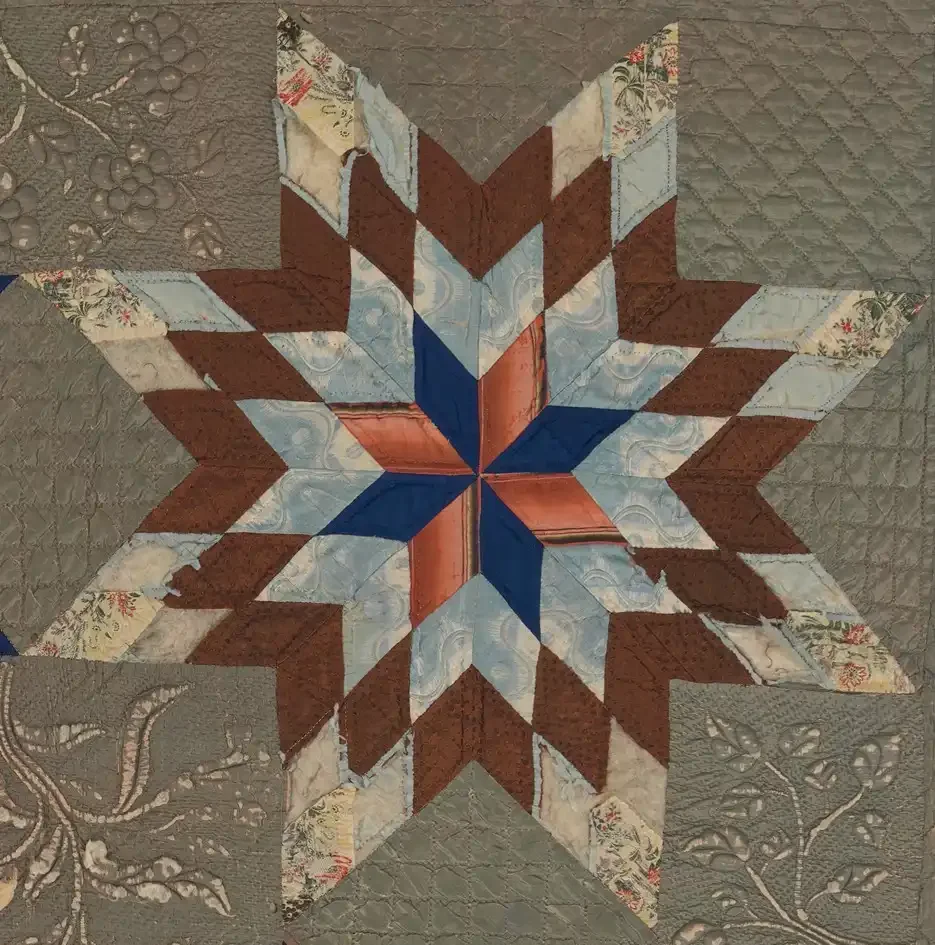American Indians were reputable for their excellent craftsmanship and artistry, creating woven headdresses, ceremonial clothing, pottery, basketry, beadwork, blankets, and rugs treasured by collectors.
Native American quilts have developed into a distinct art form, representing the country’s sovereignty, resilience, vibrancy, and diversity.
Are you curious about the tradition and diversity of the native American quilt? Today’s article is all about that. Read on to learn more about this art product!
Tradition & Diversity of The Native American Quilt
American women started using quilts in the 19th century. While different tribes created different types and designs of quilts, the three most well-known styles are below.

Star Quilting
The star pattern is probably the most popular quilting type by far. The process starts by cutting fabric into diamond-shaped pieces and finishes by sewing five to six pieces together in long strips.
People fit these strips close to each other and sew them to make large diamonds. Then, they sew large diamonds together to generate a big star.
The last stage is binding, which begins by sewing long fabric strips over the quilt’s raw edges. This step covers the three previous layers, preventing separation.
The above primary steps occur in almost any start quilting, either basic or complex.
Initially, every detail of a quilt was manually sewn. www.ohbeautydirect.com Today, this tradition remains the same, though artisans sometimes use the help of a sewing machine to make some parts look more precise.
We can see the quilter’s skills evidently through the meticulous stitches.
The star pattern is perhaps one of the most arduous to achieve. Artisans have to spend days and hours sewing accurately and carefully.
A perfectly sewn star quilt will lay flat without its edges’ center sticking up. Even a tiny stitch can potentially ruin the item’s beautiful alignment.
Each product consists of some filling, layered fabrics, and thread to connect the fabrics. Materials utilized to produce star quilts originate from various places.
Initially, people traded them with other goods. But now, people outside the tribe buy these materials.
A great example of star quilting is the Morning Star product, which consists of an eight-wing star filling out the major part of the top. Quilters piece numerous tiny diamonds together skillfully to generate this star.
Interestingly, native American Indian women living in the Great Lake areas added floral patterns from their traditions. They placed those appliquéd flowers between the wings of the star.
However, the Morning Star motif is still the most popular among today’s Native Americans and an ideal option for gifting on special occasions.

Seminole Patchwork Quilting
Seminole quilting got the inspiration from the patchwork utilized for textiles by people living in the Southeastern.
In the 1800s, trading for cotton textiles was a daunting trip from Everglades. Thus, women started sewing long strips from the fabric on the bolts’ end to create ‘strip clothing.’
In the late 19th century, sewing machines became available, and these women used them to make more petite strips. This change helped Seminole designs become more complex and elaborate.
Seminole patchwork usually played a critical part in making traditional clothes, including the large patchwork shirt for men and the long full skirt for women.
Today, people even wear these garments for important occasions. Those stunning Seminole patchwork motifs eventually became popular in quilting, too.

Hopi Baby Quilting
Southwestern Americans have integrated designs from basketry, Navajo blankets, sand paintings, and other symbolic inspirations into their quilting, breathing more cultured adaptations of the traditional styles into their unique quilts.
Hopi are among the most renowned quilters living in the Southwestern. Today’s Hopi quilters apply pottery designs to their quilts in different ways.
The baby-naming celebration is an evident example of ancient ways leading to the use and style of quilts. Historically, the father would weave a blanket for his baby, and the child would receive this blanket at that ceremony.
The tradition of the Hopi people is that men were responsible for weaving. Today, Hopi quilts have come as a replacement for woven blankets as presents for this occasion.
Pearl Nuvangyaoma, a cultured basket maker, has a burning passion for making quilts. She uses fabric distributed by churchwomen to make her products.
Though she sometimes quilts with patterns, she says it’s interesting to gather the fabric pieces randomly without planning the colors in advance.
She calls it the old-world way. While she sometimes sells her products, she donates most of them to Hopi kids.
Quilts In The Native American Tradition of Giving Gifts
Gift-giving is a vital part of the ancient and modern American communities. However, quilts given as gifts today may not genuinely reflect the native American tradition and culture.
These presents can appear at funerals, graduations, pow-wows, and baby-naming ceremonies to honor veterans and athletic achievements. Quilts are one of the most common presents at those events.
Modern Native American people have embraced quilting art, expanded it in form and design, and demonstrated to the world that a quilt as a gift is a meaningful option for meaningful occasions.
| More: Top 22 Fantastic Native American Gifts For Everyone
Today’s Native American Quilt Artists
Many native American artisans have become quilters, creating stunning, valuable scenic products with traditional patterns and cultural motifs.
It is riveting to witness the cultural connection between old-fashioned and modern native American quilting.
Yet, we should know that many modern products bear the same styles and patterns as those old-world women have made over the decades.
Some artists prefer working alone, whereas others enjoy sharing tips and ideas with other quilters.
Bottom Line
The high requirement for accuracy in making a native American quilt has raised a controversial question.
How many artists can add their unique style and personality to the products but still maintain the cultural value bequeathed by the old generations?
After all, quilters from various cultures should portray the world and humans around them, so the history and diversity of quilting can continue to prolong.

